Smoke alarms play a crucial role in safeguarding homes and families by providing an early warning in the event of a fire. These devices are essential for ensuring safety and can significantly reduce the risk of injury or death caused by house fires. Among the various brands on the market, First Alert smoke alarms are well-known for their reliability and advanced features. They are designed to detect smoke efficiently and alert occupants swiftly.
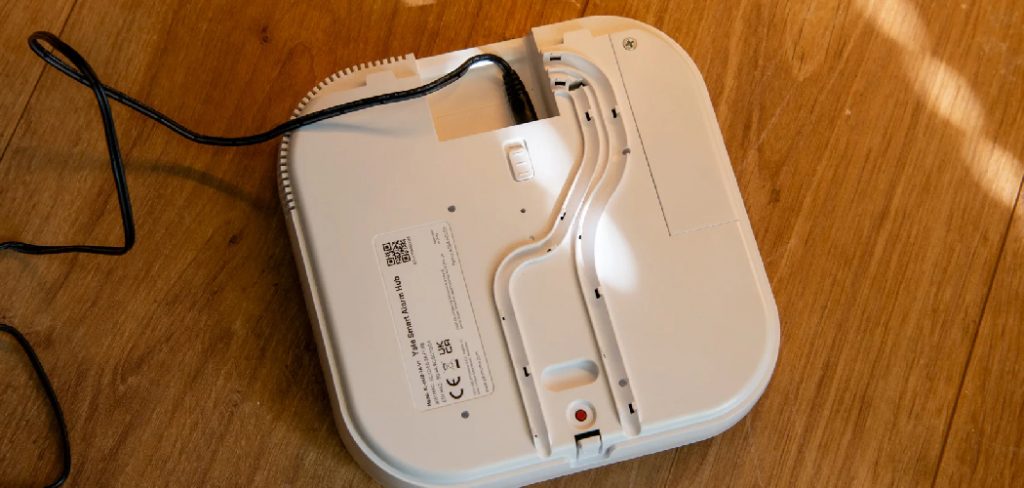
First Alert offers an array of models suited to different needs, emphasizing both ease of installation and long-term dependability. Regular testing of smoke alarms is vital to ensure they function correctly when needed. Testing smoke alarms at least once a month is recommended to check for operational issues and battery life. Knowing “how to test first alert smoke alarm” can help maintain this critical layer of protection, ultimately contributing to a safer home environment.
Understanding Your First Alert Smoke Alarm
Types of First Alert Smoke Alarms
First Alert offers a wide range of smoke alarms to suit various safety needs. Two primary types are ionization and photoelectric alarms. Ionization alarms are adept at detecting flaming fires, thanks to their design, which responds to smoke particles through a small ionized chamber. On the other hand, photoelectric alarms excel at identifying smoldering fires, using light sensors to detect smoke particles more efficiently in these scenarios.
Beyond these basic models, First Alert also offers interconnected alarms, which communicate with each other throughout the home for comprehensive coverage. Some models include dual detection for both smoke and carbon monoxide, providing an added layer of safety. Additional features such as voice alerts can further enhance safety by communicating the specific type of danger present.
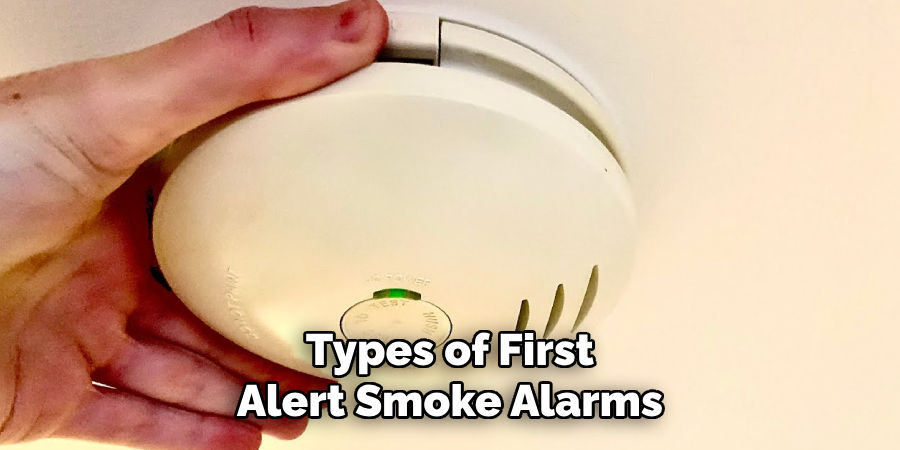
How Smoke Alarms Work
Understanding the basic functioning of smoke alarms is critical for ensuring their effective operation. These devices typically rely on sensors to detect smoke or heat, triggering an alarm sound to alert occupants. Ionization smoke alarms use radioactive material between two charged plates to ionize air, which helps detect small smoke particles, while photoelectric alarms use a light beam aimed into a sensing chamber.
When smoke enters, it scatters the light, sending a signal that activates the alarm. Familiarity with your specific model’s operation allows you to perform thorough testing, ensuring it responds correctly to smoke and fulfills its role as a critical safety device in your home.
Reasons to Test Your Smoke Alarm
Ensuring Reliability
Regular testing of your smoke alarm is crucial to confirm its reliability, especially during emergencies. Smoke alarms are life-saving devices designed to provide timely alerts in case of fire or hazardous smoke, offering early warnings that can significantly increase the chances of escape and survival. Ensuring that your First Alert smoke alarm is in working condition is key to maintaining this line of protection.
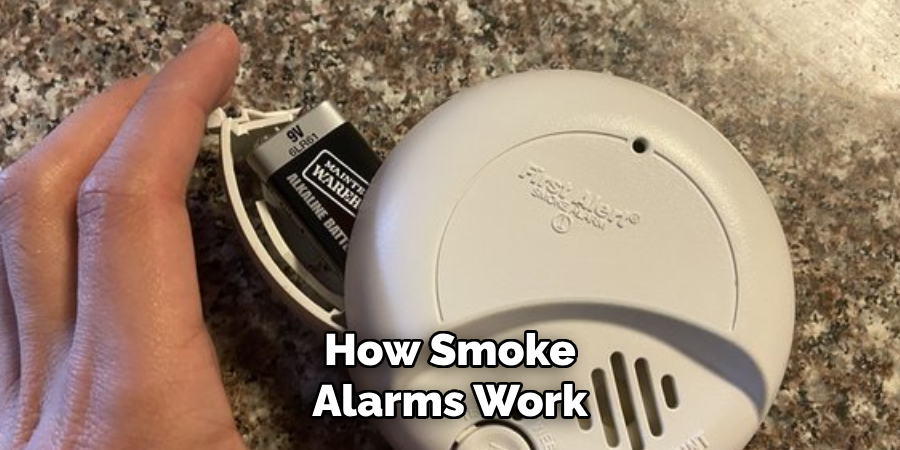
Identifying Malfunctions
Testing helps in identifying malfunctions that can prevent the alarm from functioning properly when needed. Common issues include battery failure, sensor blockage, or a loss of electrical power. These problems can render your smoke alarm ineffective, leaving your home vulnerable to undetected fires. Regularly checking your alarm can address these issues promptly, ensuring that the alarm remains operational.
Peace of Mind
Beyond technical assurance, regular smoke alarm testing provides peace of mind. Knowing that your alarm is fully functional reassures you that your home is protected and that you and your loved ones will be alerted promptly in the event of fire or smoke. This sense of security contributes greatly to the overall safety of your household, allowing you to focus on other aspects of home maintenance with confidence.
Tools and Preparation for Testing
Tools Needed
You will need a few essential tools to effectively test your First Alert smoke alarm. A step ladder is necessary if the alarm is mounted on a high ceiling, allowing you to reach it safely and comfortably. A can of compressed air, though optional, is useful for clearing out any dust or debris that may interfere with the alarm’s sensors. Most importantly, ensure you locate the test button, typically built into the alarm unit, as it is integral for conducting a proper test.
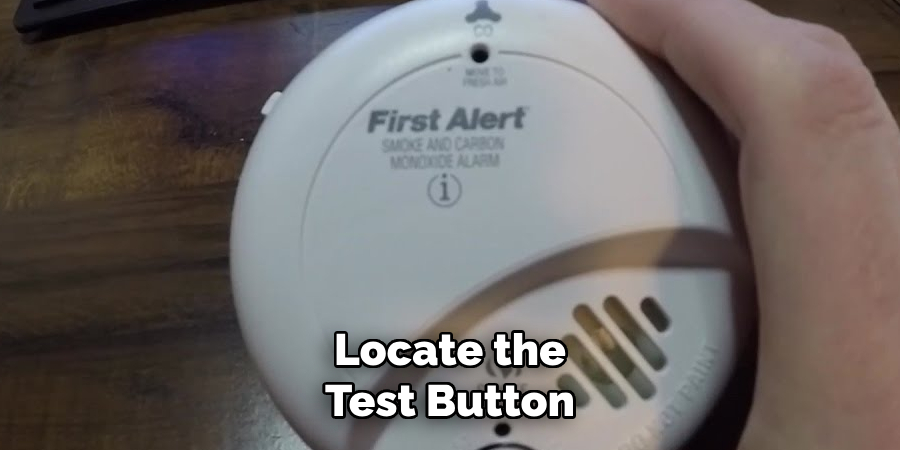
Preparation Steps
Before testing, make sure the alarm is easily accessible. This might involve moving furniture or obstacles that could impede access. Familiarize yourself with the user manual, which will provide specific instructions and safety guidelines pertinent to your particular alarm model. It’s prudent to have replacement batteries on hand, as testing may reveal that the current ones need replacing. Following these steps will help ensure a smooth and efficient testing process.
How to Test First Alert Smoke Alarm: Step-by-Step Guide
Step 1: Locate the Test Button
Begin by identifying the test button on your First Alert smoke alarm. This button is typically located on the front of the unit and is often marked in a bright color, such as red or yellow, to stand out against the device’s neutral color. The test button is specifically designed for easy identification and accessibility, ensuring you can find and use it effectively whenever a test is necessary.
Step 2: Press and Hold the Test Button
Once you have located the test button, press and hold it for approximately 3-5 seconds. During this time, you should listen for a loud beep or alarm sound, which indicates that the smoke alarm is functioning correctly. This sound confirms that the alarm can effectively alert you in the event of smoke or fire, making sure that the warning system is operational.
Step 3: Release the Test Button
After hearing the alarm sound, release the test button. The alarm should stop sounding immediately once the button is no longer pressed. This action verifies the smoke alarm’s reset function, ensuring it can return to standby mode until smoke or heat triggers it automatically in a real fire situation.
Step 4: Clean the Smoke Alarm (If Needed)
If your smoke alarm appears dusty, utilize a can of compressed air to gently blow out any particles from the unit. This step ensures that the sensors remain unobstructed and sensitive to smoke. Safety precautions are crucial; turn off the power supply to the alarm, if applicable, to avoid any risk of electrical shock during cleaning. Regular maintenance keeps the alarm operating at peak efficiency.
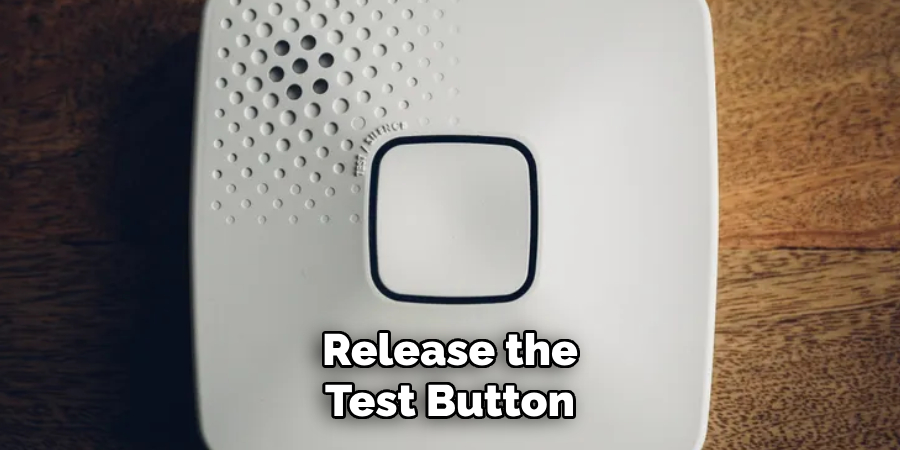
Step 5: Check the Battery
Next, verify the battery’s performance by listening for any inconsistent beeping during the test. This could indicate a weakening battery needing replacement. To replace, carefully remove the old battery and insert a new one, following the manufacturer’s guidelines. According to local regulations, old batteries should be disposed of properly to prevent environmental harm and safety hazards.
Step 6: Document the Test
Finally, maintain a record of your smoke alarm tests. Documenting each test date provides a comprehensive history of your maintenance routine, ensuring your alarm complies with any safety regulations. This record contributes to peace of mind and serves as a valuable reference for ensuring consistent monitoring and timely upkeep of your safety devices. Regular documentation reflects a proactive approach to home safety management.
Troubleshooting Common Issues
Even the most reliable smoke alarms can experience issues that diminish their effectiveness. Here are some common problems you might encounter and the steps to address them:
Issue 1: Alarm Doesn’t Sound When the Test Button is Pressed
If your smoke alarm fails to emit a sound when the test button is pressed, it may be due to a dead battery, a faulty unit, or disconnected wiring. Start by replacing the battery to rule out the simplest solution. If the alarm still doesn’t work, inspect the connections to ensure that all wires are secure and undamaged. For hardwired alarms, verify that the circuit breaker controlling the alarm system is in the “on” position. Should these steps not resolve the issue, and the unit is old or shows signs of malfunctioning, it may be time to replace it.
Issue 2: Frequent False Alarms
Various factors can trigger false alarms, often related to environmental conditions like cooking smoke or steam. To minimize these occurrences, consider relocating the alarm away from the kitchen or bathroom, ensuring it remains clear of smoke-producing activities. Additionally, ensure nothing obstructs the sensor, such as dirt or debris, which can also inadvertently trigger an alarm. Clean the smoke alarm regularly and check sensitivity settings if available, adjusting them according to the manufacturer’s guidelines to further prevent false alarms.
Issue 3: Interconnected Alarms are Not Functioning
Interconnected smoke alarms are designed to work in unison, but connectivity issues can occur. Begin by checking that each alarm is properly powered and functional independently. Verify that all devices are on the same circuit and examine their connections and settings for proper synchronization. If you continue to experience problems, consult the manual for troubleshooting instructions specific to your alarm model. Some systems require a reset process or specific frequency settings for connectivity, and referring to the manufacturer’s guidance can often resolve syncing issues.
Conclusion
Regularly testing and maintaining your First Alert smoke alarm is crucial for safeguarding your home against fire hazards. You ensure your smoke alarm operates effectively by following key steps such as locating and pressing the test button, cleaning the device, checking and replacing batteries, and documenting test dates. Consistent adherence to these procedures enhances your home’s safety and provides peace of mind.
It is vital to remain proactive with fire safety measures, especially regarding how to test first alert smoke alarm, to prevent potential accidents. Sharing this knowledge with family and friends contributes to a broader awareness of fire safety, empowering others to implement these practices in their homes. Remember, a well-maintained smoke alarm can distinguish between disaster and safety, underscoring the necessity of routine testing and vigilance. Stay informed, stay safe, and promote fire safety in your community.
About
Safety Fic is a distinguished figure in the world of Diy design, with a decade of expertise creating innovative and sustainable Diy solutions. His professional focus lies in merging traditional craftsmanship with modern manufacturing techniques, fostering designs that are both practical and environmentally conscious. As the author of diy, Safety Fic delves into the art and science of Safety Fic-making, inspiring artisans and industry professionals alike.
Education RMIT University
(Melbourne, Australia) Associate Degree in Design (Safety Fic) Focus on sustainable design, industry-driven projects, and practical craftsmanship. Gained hands-on experience with traditional and digital manufacturing tools, such as CAD and CNC software.
Nottingham Trent University
(United Kingdom) Bachelor’s in diyfastly.com and Product Design (Honors) Specialized in product design with a focus on blending creativity with production techniques. Participated in industry projects, working with companies like John Lewis and Vitsoe to gain real-world insights.
Publications and Impact
In diy, Safety Fic his insights on indoor design processes, materials, and strategies for efficient production. His writing bridges the gap between artisan knowledge and modern industry needs, making it a must-read for both budding designers and seasoned professionals.
